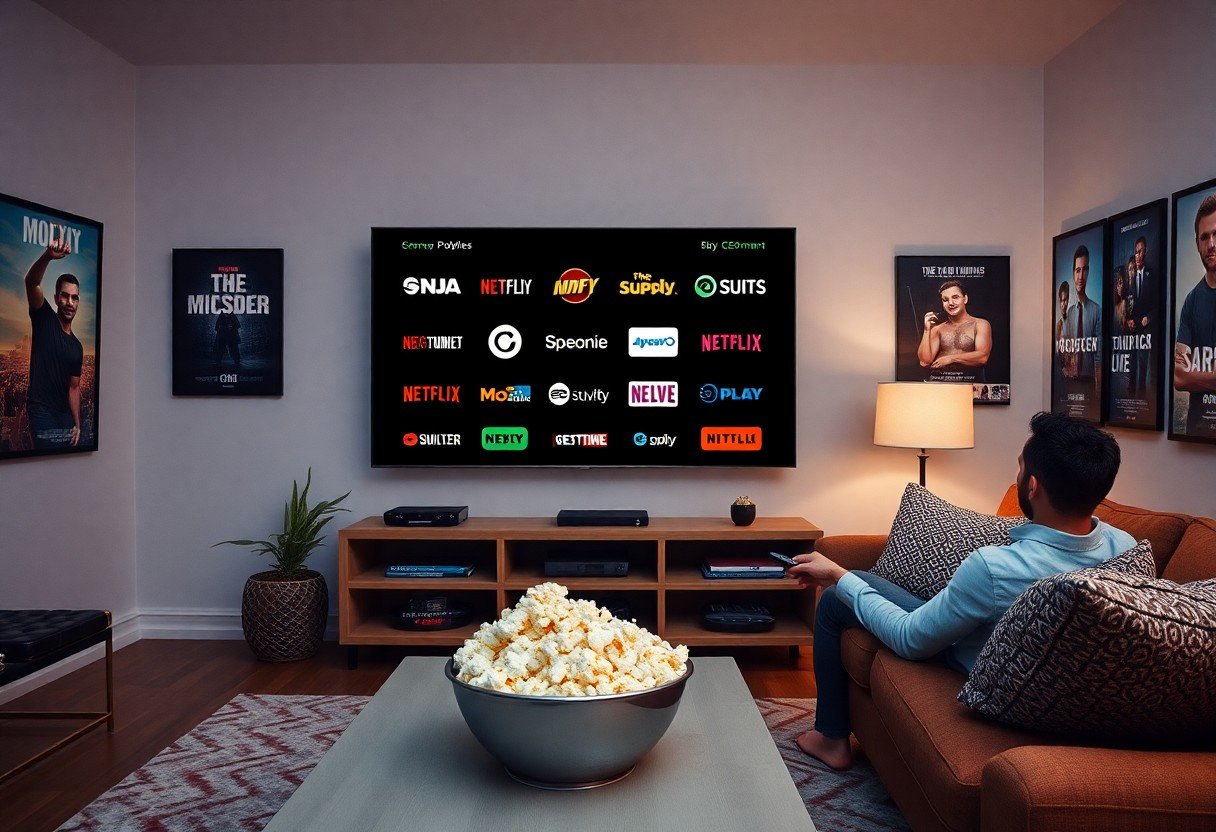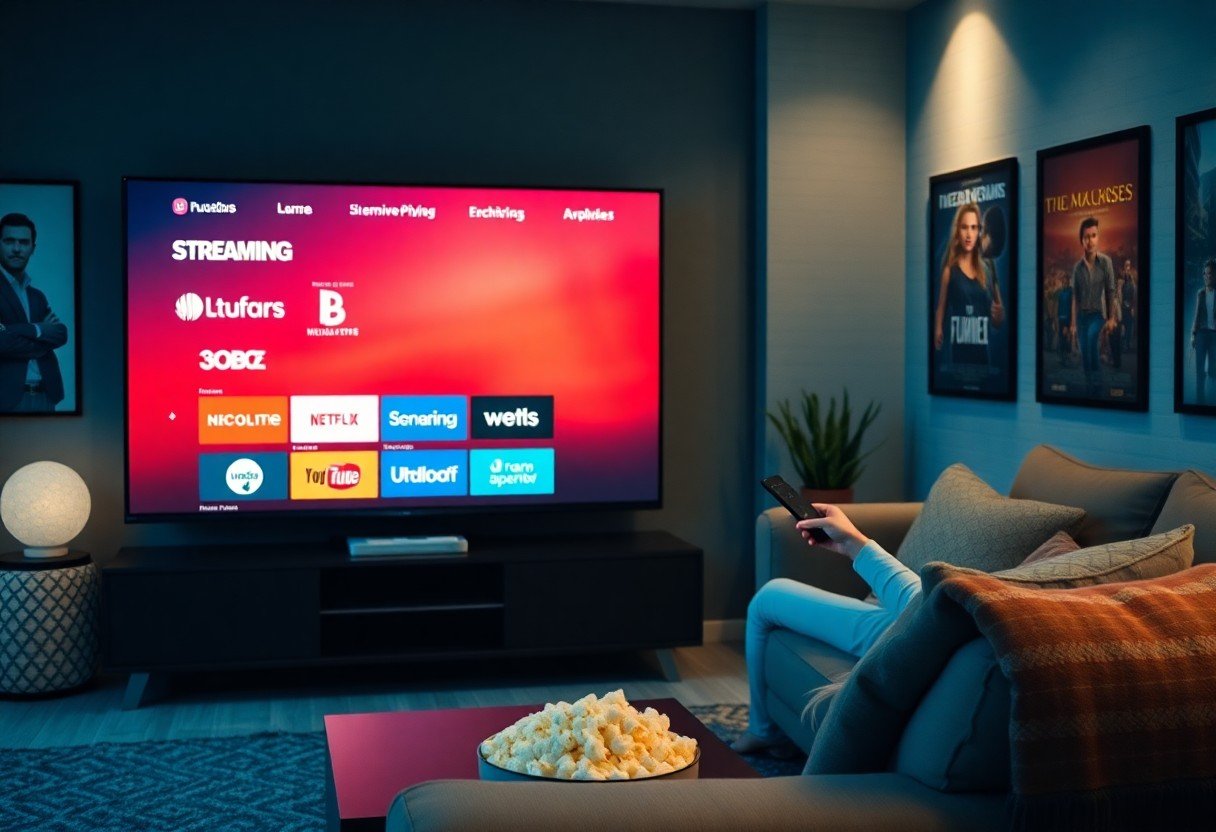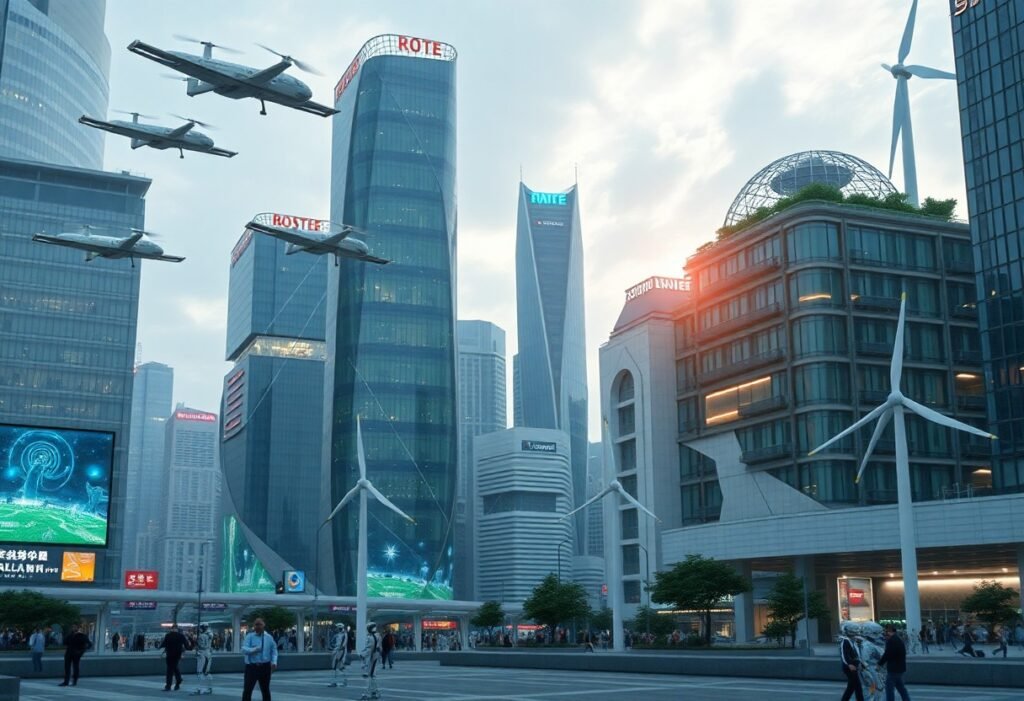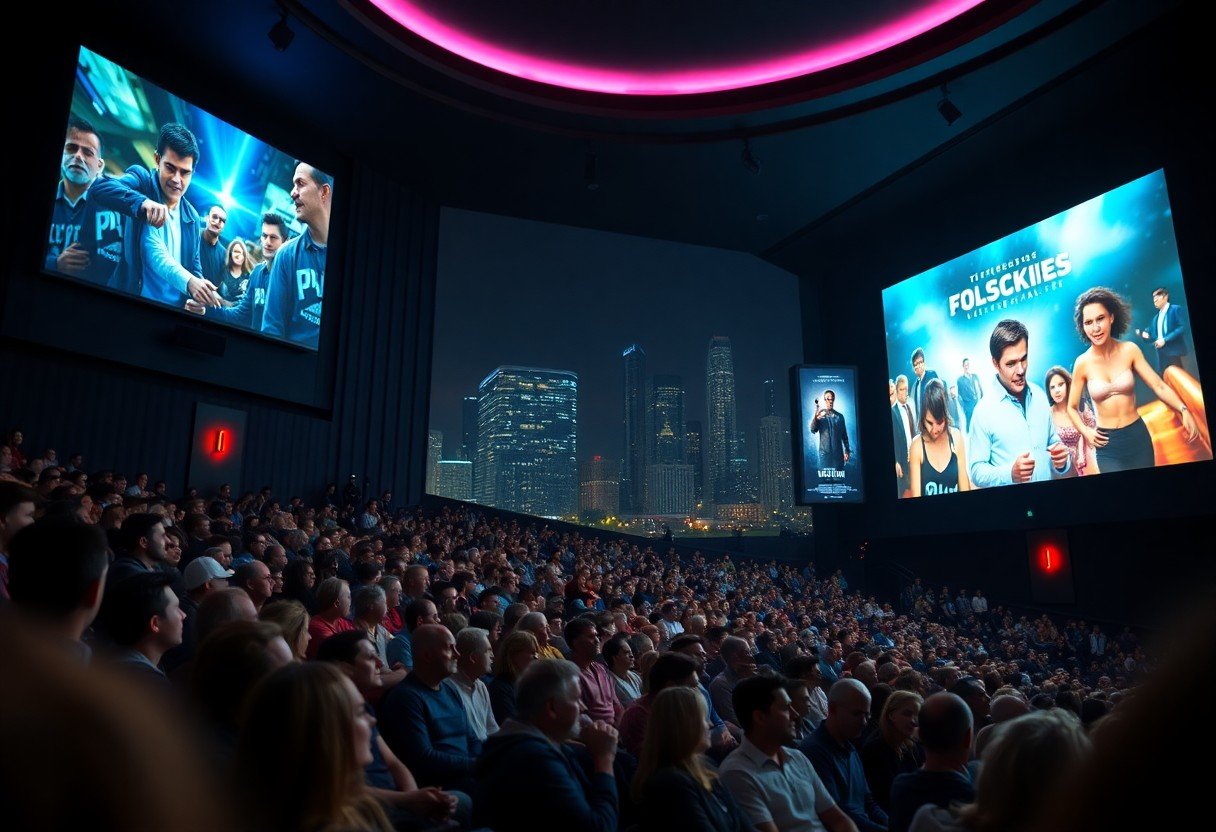Most people are aware that streaming platforms have dramatically changed how you consume movies, but their impact on the entire distribution landscape is profound. As traditional theaters face declining attendance, these platforms are creating new avenues for independent filmmakers and major studios alike, granting you access to a wider variety of content from the comfort of your home. However, this evolution also brings challenges, like the financial viability of cinemas and potential content saturation. Understanding these shifts is vital for grasping the future of the film industry.

The Evolution of Movie Distribution
To understand how movie distribution has transformed, you must explore its journey from traditional theater releases to the modern-day digital streaming landscape. Historically dominated by cinema and physical media, the industry now embraces innovative methods that cater to your viewing desires, reflecting changes in technology, audience behavior, and economic trends.
Historical Overview
The film distribution process has evolved significantly since the early 20th century, when theaters were the exclusive venues for movie-viewing. The advent of VHS and DVD introduced home viewing, but it was the rise of cable and pay-per-view that began to shift audiences’ expectations toward accessibility and convenience.
The Rise of Digital Platforms
Against this backdrop, digital platforms began to emerge as powerful players in the movie distribution landscape. Streaming services such as Netflix and Hulu have changed how you consume movies, providing immediate access to a vast library, vitally transforming your viewing habits.
Plus, with streaming services offering on-demand content, you now enjoy the flexibility of watching films anytime, anywhere. This shift has empowered consumers to explore niche genres and independent films that might not have made it to theaters, creating a more inclusive space for various storytelling styles. Furthermore, the competitive nature of these platforms has led to innovative marketing strategies, direct partnerships with filmmakers, and an emphasis on original content, significantly enhancing your movie experience. However, this new landscape also raises concerns about content saturation, potentially overwhelming viewers with choices, and the financial implications for filmmakers and traditional cinemas needing to adapt to the digital age.
Streaming Platforms: A New Paradigm
Any discussion about modern movie distribution must take into consideration the rise of streaming platforms. These digital services have created a shift in how films are released, marketed, and consumed, offering immediate access to vast libraries while simultaneously challenging traditional theaters. The landscape of entertainment is evolving rapidly, with this paradigm not just changing where you watch content but also how you experience it.
Key Players in the Streaming Industry
Paradigm shifts in the entertainment space have introduced key players such as Netflix, Amazon Prime Video, Disney+, and Hulu, which dominate the streaming industry. These platforms invest heavily in original content while leveraging subscriber bases to dictate trends and viewing patterns. Their influence reshapes not just distribution models but also the competitive ecosystem, setting standards that traditional media companies are compelled to follow.
How Streaming Changes Viewer Habits
Beside the obvious convenience, streaming platforms significantly alter how you engage with content and when you choose to watch it. With the removal of rigid scheduling often found in traditional broadcasting, platforms empower you to select titles on your terms. This flexibility reshapes viewing rituals, allowing for irregular patterns such as binge-watching entire seasons at once.
With streaming, you now enjoy greater control over your viewing experience. The ability to watch shows and movies on demand means you can tailor your entertainment schedule to fit your lifestyle. This shift has fostered a binge-watching culture that often encourages you to consume an entire series in one sitting, potentially leading to a decrease in patience for slower storytelling methods in film. Moreover, the vast array of options available can sometimes overwhelm you, making it difficult to select what to watch, yet it also provides a thrilling opportunity for discovery and personalized viewing.
Impact on Filmmaking
While streaming platforms have democratized access to cinema, they also profoundly influence the creative process of filmmaking. Independent filmmakers can now reach global audiences without the traditional barriers of theatrical distribution. Their work is not only visible but increasingly celebrated in this new digital landscape, allowing for diverse storytelling that might not have flourished previously.
New Opportunities for Filmmakers
To navigate this new landscape, you’ll find that streaming platforms offer unprecedented opportunities for filmmakers. With their low barriers to entry, you can showcase your unique storytelling vision to a broader audience, attracting new fans and potential collaborators from around the world.
Changes in Production Models
About the shift in production models, streaming services are altering how you approach filmmaking. You may find that traditional financing avenues have shifted, emphasizing shorter production schedules and innovative storytelling formats that cater to binge-watching audiences.
Due to streaming companies prioritizing content that can engage viewers rapidly, you will notice a marked transition towards episodic storytelling and smaller budgets that demand creativity and flexibility. This new reality often encourages the fusion of genres and allows more experimental projects to thrive. For you, this means that finding your niche might take a new form, where your ability to engage an audience is as vital as artistic vision and execution.
Audience Accessibility and Global Reach
Not only have streaming platforms expanded your options for viewing films, but they’ve also democratized access to diverse content around the world. With just a subscription, you can watch acclaimed movies from different countries and cultures, breaking down barriers that once confined audiences to local theaters. This global reach means you are no longer limited to mainstream Hollywood hits but have a wealth of international cinema at your fingertips.
Democratizing Film Access
Among the most significant changes in film distribution is how streaming platforms have leveled the playing field for independent filmmakers and international films. With fewer gatekeepers, niche and unique stories can now reach wider audiences, enabling viewers like you to explore and appreciate cinema that resonates with diverse experiences.
Cultural Exchange through Streaming
Film is a powerful medium for cultural exchange that streaming platforms have enhanced remarkably. By bringing together diverse voices, you gain access to stories and perspectives from around the globe, enriching your understanding of different cultures and societies.
And streaming platforms facilitate this exchange by curating content that reflects a variety of cultural narratives. As you explore international titles, you’re confronted with unique storytelling techniques and cultural nuances that may challenge your perceptions. This exposure not only fosters a deeper connection with far-flung narratives but also encourages empathy and understanding among viewers. In a world that is often divided, these platforms invite you to celebrate diversity and appreciate shared human experiences through the captivating art of film.

Challenges for Traditional Distribution Channels
Many traditional distribution channels are facing significant hurdles due to the rise of streaming platforms. The swift shift in audience preferences has led to dwindling box office revenues and shifted focus toward digital releases. As noted in an article on Revolutionising frontier in entertainment, this transition has compelled studios to rethink their marketing and distribution strategies, often prioritizing online availability over theatrical experiences.
Decline of Theatrical Releases
After years of dominance, theatrical releases are witnessing a noticeable decline, driven by changing viewing habits. Audiences increasingly favor the convenience and comfort of streaming from home, leading to fewer visits to cinemas and ultimately affecting film profitability.
The Impact on Movie Theaters
At the same time, the rise of streaming has created a ripple effect on movie theaters, forcing many to adapt or face closure. The reduction in film diversity in theaters means you may find fewer options available when you decide to go out to watch a movie.
Another significant aspect of this shift is the struggle for profitability among theaters, as they shift to showing fewer blockbuster films. You might find that ticket prices continue to rise, making it less appealing to visit cinemas. Additionally, theater chains now face the challenge of competing with the personalized experience that streaming services provide, offering content tailored to your preferences. In this changing landscape, the future of movie theaters hangs in the balance, requiring innovative responses to ensure their survival.
Future Trends in Movie Distribution
Despite the current dominance of streaming platforms, the future of movie distribution will see a blend of traditional methods and innovative technologies. As audiences increasingly crave personalized content and diverse viewing experiences, you’ll find that distributors are likely to adopt more flexible models that cater to these preferences, reshaping how films reach your screen.
The Role of Artificial Intelligence
For movie distributors, artificial intelligence will play a key role in optimizing content suggestion algorithms, target audience identification, and marketing strategies. By leveraging AI, you can expect a more tailored viewing experience, as platforms analyze your behavior to curate content that aligns with your tastes, potentially revolutionizing how films are promoted and consumed.
Predictions for the Next Decade
Artificial intelligence and data analytics are projected to drive significant changes in movie distribution over the next decade. As platforms gather and analyze your viewing habits, they will refine their content offerings, focusing on personalization and exclusivity. This evolution could result in more niche films gaining visibility, while blockbuster releases may become less frequent due to shifted audience preferences. Additionally, the integration of virtual reality and immersive technologies may provide you with unprecedented ways to experience film, further transforming your engagement with the art form.
Due to the rapid evolution in technology and changing consumer behavior, movie distribution is bound to experience significant shifts in the coming years. You may see more films released directly through streaming platforms rather than traditional theaters, as production companies abandon outdated release windows. This transition may also lead to a rise in independent films, which could find broader audiences thanks to targeted online marketing. However, the challenge lies in navigating an overcrowded digital landscape where capturing your attention will be more vital than ever, as platforms compete fiercely for your loyalty and viewing time.
To wrap up
Taking this into account, streaming platforms have significantly transformed how you experience and consume movies, reshaping the distribution landscape in profound ways. You now have access to a vast array of films from the comfort of your home, often accompanied by features like original content and curated selections. This shift not only influences your viewing habits but also affects production and marketing strategies across the industry. As you navigate this evolving environment, you’ll find that your preferences and expectations are driving a more dynamic and personalized film experience.









